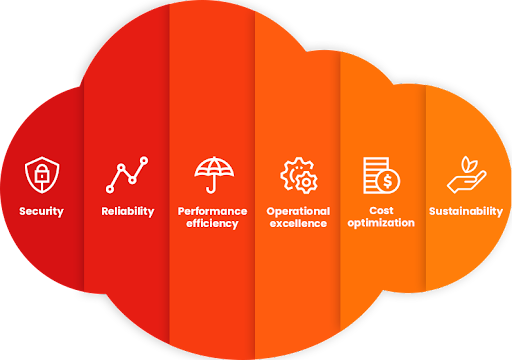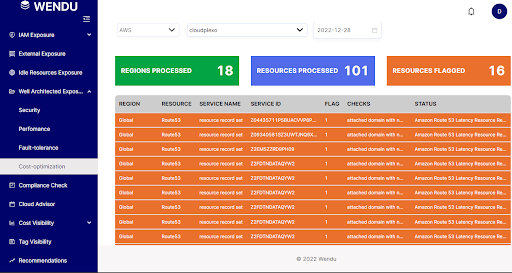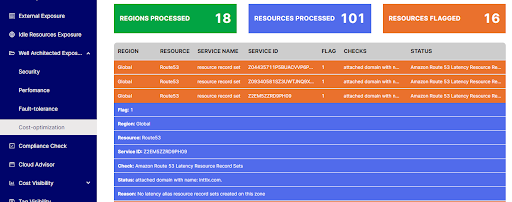
AWS Well-Architected Framework: Cost Optimization
In our previous post, we laid the foundation and gave an introduction into the AWS Well-Architected Framework series. We touched on the security pillar and after securing your cloud architecture, you need to make sure that your cloud architecture is cost optimised to ensure that you don’t have cloud waste and you are not overspending.
In this blog post, we will be looking at another pillar- cost optimization. In this blog post, we will explore the pillar emphasising how you can build a cost-optimised architecture as we did on the security pillar.
The AWS Cost Optimization Pillar
Companies of all sizes are surfing on the wave of cloud computing. A major concern for some is how to effectively and efficiently use the cloud without overspending and that is what the AWS Cost Optimisation pillar addresses.
In a previous post on what organisations are doing to optimise their cloud costs, we defined cloud cost optimization as the process of reducing your overall cloud spend by identifying mismanaged resources, eliminating waste, reserving capacity for higher discounts, and right sizing computing services to scale. Cost optimization is not a one time thing but a continual process of refinement and improvement over the span of a workload’s life cycle.
The AWS Cost Optimization Pillar is one of the five core pillars of the AWS Well-Architected Framework. The Cost Optimization pillar helps customers to reduce their overall AWS costs by understanding the different types of cloud resources used and the steps to control cloud costs.
The Cost Optimization pillar includes guidance on using reserved instances, leveraging spot instances, monitoring usage, understanding cost allocation, and taking advantage of cost savings plans. Money is a valuable asset and this pillar also gives guidance on using the AWS Cost Explorer to view and analyze cost and usage data and the AWS Trusted Advisor to identify opportunities to optimize costs.
Principles Of A Cost Optimised Cloud Architecture
- Implement cloud cost management tools (FinOps SaaS Tools): Cloud cost management (FinOps) is the use of cloud-based software, applications, and services to manage financial operations. This includes the use of cloud-based accounting and financial management systems, as well as the storage and sharing of financial data and documents. Implementing cloud cost management provides cloud cost savings through access to financial information, increased scalability, real-time data analysis, lower costs, improved IT security, enhanced collaboration, automated processes and streamlined operations.
- Adopt a consumption model: Cloud consumption models are the way businesses purchase cloud services from a cloud services provider. Common models include subscription-based, pay-as-you-go, and on-demand. Subscription-based models involve a long-term commitment, usually with a set duration and cost. In adopting a consumption model, you must decide which model is best for your particular needs.
- Measure overall efficiency: This involves understanding the cost of the services and the associated usage, measuring the average utilization of services, and analyzing the pricing model of the cloud platform to determine the most cost-effective solution.
- Stop spending money on undifferentiated heavy lifting: Undifferentiated heavy lifting refers to the mundane, time-consuming tasks that must be done in order to maintain and manage a cloud infrastructure. This includes tasks such as setting up servers, monitoring performance, and troubleshooting problems. These tasks are often considered "undifferentiated heavy lifting" because they are not related to a specific application or cloud service and require a significant amount of time and resources to complete.
- Analyze and attribute expenditure: Analyzing and attributing expenditure involves examining and breaking down your company's spending in order to identify where money is being spent and why. In order to attribute expenditure, you must first identify what you are spending money on including both operating and capital expenses. By doing this, you can then make informed decisions about how to allocate your cloud resources and optimize spending.
Cloud Cost Optimization Best Practices
A well cost-optimized cloud architecture fully utilizes all resources, achieves an outcome at the lowest possible price point, meets functional requirements and follows these best practices:
Consider Some Trade Offs / Questions: For example, do you want to optimize for speed to market or for cost? In some cases, it’s best to optimize for speed—going to market quickly, shipping new features, or simply meeting a deadline—rather than investing in up-front cost optimization.
Cost-Optimal Deployment: Design decisions are sometimes directed by haste rather than data and as the temptation always exists to overcompensate rather than spend time benchmarking for the most cost-optimal deployment. This might lead to over-provisioned and under-optimized deployments.
Use The Appropriate Configurations: Using the appropriate services, resources, and configurations for your workloads is key to cost savings.
Building A Cost Optimized Architecture
This includes selecting components and resources that will offer the best, fast and most reliable performance while still keeping costs low. It also involves optimizing the cloud architecture design in order to provide the most efficient use of cloud resources and reduce cloud waste.
- Cost Optimization Review: Analyze your cloud spend to identify any unnecessary costs or inefficiencies. Review areas such as storage, compute, networking and database services and identify potential areas for cost optimization.
- Automate Cloud Management: Automate as much of your cloud management as possible to reduce manual effort and costs associated with managing your cloud environment.
- Right-Size Your Resources: Monitor the utilization of your cloud resources and right-size them accordingly.
- Leverage Spot Instances & Reserved Instances: Utilize spot instances and reserved instances to take advantage of discounts and reduced costs.
- Utilize Cost-Effective Storage Solutions: Utilize cost-effective storage solutions such as Amazon S3 to reduce storage costs.
- Use Cost-Efficient Compute Options: Utilize cost-efficient compute options such as AWS Lambda to reduce compute TCO costs.
Wendu And Cost Optimized Architecture
Wendu implements the AWS Well-Architected Framework and gives you total and full Cost visibility of your cloud cost across multiple cloud environments in one platform. With this, you get the insights needed to optimise your cloud cost. As already shown in our previous post, with Wendu, you can get a well architected assessment of your AWS architecture automatically, on a daily basis, in every region you have assets in, without the hassle of answering a bunch of questions.
Wendu is also a FinOps and Cloud Cost Optimization tool that helps you automate certain aspects of your AWS cloud cost management, and gives you a well accurate and detailed monitoring of your cloud usage and spend, helping you make quick and valuable decisions to ensure your AWS architecture is cost optimized.


Learn more about Wendu here, and you can also request a demo to see Wendu in action.